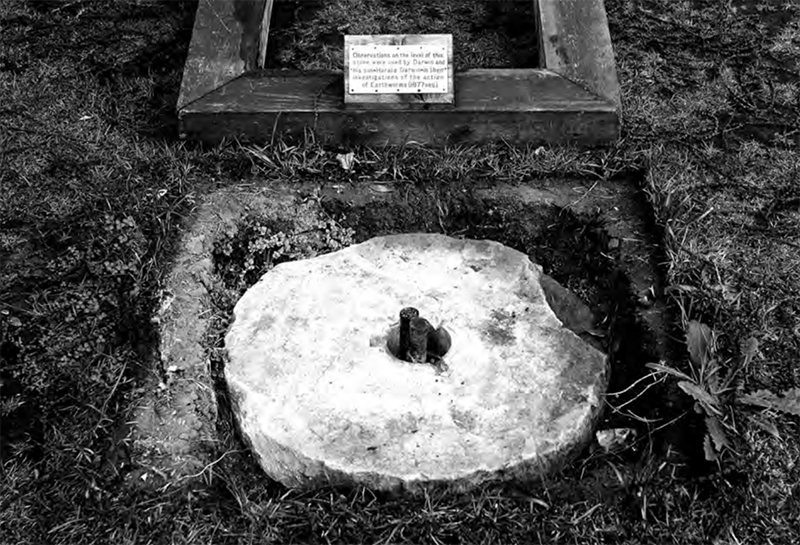The mere fact that Charles Darwin’s last book was The Formation of Vegetable Mould, Through the Action of Worms, published in 1881, speaks volumes about the man’s character.
Having revolutionized all of biology with his Origin of Species (1859) and then emphasized in The Descent of Man (1871) how his ideas about evolution transformed the understanding of our own position in the world, one might have imagined Darwin settling in later life into the role of grand speculative philosopher. Instead he stayed true to his passion for the minutiae of the living world by studying this most humble of topics: how soil is formed by worms. There was perhaps something in the modest but immensely important toil of these creatures with which Darwin identified. “It may be doubted,” he wrote, “if there are any other animals which have played such an important part in the history of the world as these lowly organized creatures.”
Over a year the worms might move 8 tons of earth in every acre of land.
Despite—or is it because of?—the apparently prosaic subject matter, Darwin’s book on mold and worms has tremendous charm. It is no sweeping synthesis in the manner of the Origin, but rather, based on careful observation and experiment, much of it conducted in Darwin’s own garden with the help of his family members. He and his children would set out early each morning from their country house at Down in Kent to examine the work of the earthworms in the cool, moist soil. These creatures munched through leaves and other vegetable matter, turning it in their gut into rich, fertile humus. Their individual labors might seem trivial, but Darwin calculated that over a year the worms might move 8 tons of earth in every acre of land, and their actions could eventually bury entire ancient buildings and monuments. He was evidently impressed by what slow, almost invisible but steady labor can achieve, given time.
The Formation of Vegetable Mould is filled with descriptions of experiments on worms and their habits, sometimes of delightful eccentricity—as when Darwin placed the creatures in pots of earth on top of his piano and watched their responses to the sounding of different notes (“C in the bass clef” and “G above the line in the treble clef” cause them to retreat into their burrows, though presumably not uniquely), or investigated how they responded to his breath when he chewed tobacco or placed drops of vinegar in his mouth.

But it is Darwin’s studies of the burrow-making activities in the wild that testify most to his boundless curiosity and inventive experimental style. Darwin wondered about the principles governing the way worms plug the openings of their burrows with leaves—an activity they perform with such vigor, he says, that at times the rustling sound may be heard on still nights. Whether they do it for protection from predators or rainwater or cold air, or for food, he admits to being unsure; maybe a bit of all of them.
What fascinated Darwin most about this behavior was the evidence that it supplied of the worms’ intelligence. “If a man had to plug up a small cylindrical hole, with such objects as leaves, petioles [stalks] or twigs,” he wrote, “he would drag or push them in by their pointed ends; but if these objects were very thin relatively to the size of the hole, he would probably insert some by their thicker or broader ends.” Do worms likewise adapt their strategy to the objects at hand, or do they just perform their actions at random?
Worms’ actions could eventually bury entire ancient buildings and monuments.
Darwin reported that 80 percent of leaves he removed from worm burrows had been inserted tip first—a far from random distribution. He then proceeded to consider the differences for leaves of various species and shape. After nighttime observations in dim light with his son Francis (who became a distinguished botanist in his own right), Darwin attested that “It appeared to both my son and myself as if the worms instantly perceived as soon as they had seized a leaf in the proper [that is, the most efficient] manner.”
Not content with these studies using natural leaves, Darwin made a more controlled and systematic investigation of the effects of shape on the worms’ behavior using cut-out paper triangles of varying proportions, “rubbed with raw fat on both sides” to protect them from damp. “We may infer,” he decided, “that worms are able by some means to judge which is the best end by which to drag triangles of paper into their burrows.”
This suggested to Darwin that the humble earthworm is no mere automaton guided purely by instinct. “We can hardly escape from the conclusion that worms show some degree of intelligence in their manner of plugging up their burrows,” he wrote. “It is surprising that an animal so low in the scale as a worm should have the capacity for acting in this manner.”
In an age when human exceptionalism was still the norm, Darwin was refreshingly open-minded about the potential cognitive powers of “lower” animals—an attitude now reflected in the “biopsychist” belief of some biologists that a kind of feeling or sentience obtains in all living things.
Darwin’s book was an unlikely bestseller, shifting more copies in its day than the Origin of Species. Perhaps that says something about the English people, whose enthusiasm for overarching theories of nature pales before their passion for gardening. ![]()
Reprinted with permission from Beautiful Experiments: An Illustrated History of Experimental Science by Philip Ball, published by The University of Chicago Press. © 2023 by Quarto Publishing plc. All rights reserved.
Lead image: Tasnuva Elahi; with images by Dauren Abildaev / Shutterstock and Chippyri from Pixabay




























